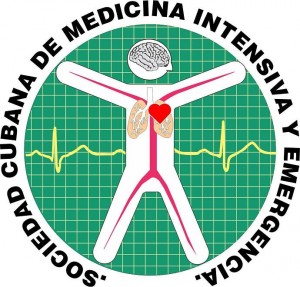Neurophysiologic variables as prognosticators in outcome of ventilated patient
Keywords:
mechanical ventilation, outlet mechanical ventilation, neurophysiological studies, neuroconduction, polyneuropathy, critical patient, APACHE II, NUTRIC score, SOFAAbstract
Introduction: Many ventilated patients in intensive care units develop neuromuscular dysfunction causing difficulties in the outcome of ventilation. Peripheral neuropathy is the most frequent of all peripheral neuromuscular damages, being difficult it’s managed by means of physical exam, but the neurophysiologic studies prevent the affection detecting it early.
Objective: Determine neurophysiological variables with prognostic value in the outcome of the mechanic ventilation and identify association of these variables and scales assessing severity of disease with botched outcome.
Methods: Conductions of peroneal and phrenic nerves were studied and the BMI, CONUT, NUTRIC score, APACHE, SOFA, amine and steroid dose were assessed. Patients were grouped according the outlet of ventilation. Association were established between neurophysiological variables (latency and amplitude of CMAP and MCV) and the rest of variables. It was obtained a court point for amplitude of CMAP useful as reference value in the prognostic of mechanical ventilation outcome.
Results: Botched outcome of ventilation was associated with decreased CMAP amplitude of phrenic nerve, with 135 µV court point for it (sensibility 63.0% and specificity 64.1%). There were not significant differences between botched outcome group and successful outcome group about polyneuropathy, age, sex, pathological background, medical admission and toxic habits.
Conclusions: Amplitude of phrenic nerve CAMP is an indicator of prognostic for outcome of mechanical ventilation.
Downloads
References
Referencias Bibliográficas
1. Latronico NP, Bolton CP. Critical illness polyneuropathy and myopathy: a major cause of muscle weakness and paralysis. Lancet Neurology. 2011 Oct; 10 (10): 931-941.
2. Shepherd S, Batra A, Lerner DP. Review of Critical Illness Myopathy and Neuropathy. Neurohospitalist. 2017 Jan; 7(1): 41–48.
3. Deem S, Lee CM, Randall JC. Acquired neuromuscular disorders in the Intensive Care Unit. American Journal of Respiratory and Critical Care Medicine. 2003; 168: 735-739.
4. Kress JP, Hall JB. ICU-acquired weakness and recovery from critical illness. N Engl J Med. 2014; 370:1626-35.
5. Zhou C, Wu L, Ni F, Ji W, Wu J, Zhang H. Critical illness polyneuropathy and myopathy: a systematic review. Neural Regen Res. 2014 Jan 9(1): 101–110.
6. Ito H, Ito H, Fujita K, Kinoshita Y, Takanashi Y, Kusaka H. Phrenic nerve conduction in the early stage of Guillain-Barre syndrome might predict the respiratory failure. ActaNeurol Scand. 2007 Oct;116(4):255-8.
7. Moss M, Yang M, Macht M, Sottile P, Gray L, McNulty M, Quan D. Screening for critical illness polyneuromyopathy with single nerve conduction studies. Intensive Care Med. 2014 May; 40(5):683-90.
8. Latronico N, Nattino G, Guarneri B, et al. Validation of the peroneal nerve test to diagnose critical illness polyneuropathy and myopathy in the intensive care unit: the multicentre Italian CRIMYNE-2 diagnostic accuracy study. F1000Res. 2014, 3:127. doi: 10.12688/f1000research.3933.3. PMID:25309729; PMCID: PMC4184363. Disponible en: http://www.pubmed.ncbi.nml.nih.gov
9. Sen BK, Pandit A. Phrenic nerve conduction study in the early stage of guillain–barre syndrome as a predictor of respiratory failure. Ann Indian Acad Neurol. 2018; 21:57-61.
10. Pustavoitau A, Stevens RD. Mechanisms of Neurologic Failure in Critical Illness. Crit Care Clin. 2008; 24: 1–24.
11. Declaración Helsinki de la AMM-principios éticos para las investigaciones médicas en seres humanos. Adoptada por la 71 Asamblea General de la Asociación Médica Mundial (en línea) en Córdoba, España, octubre 2020. Disponible en www.wma.net/es/policies
12. Assessment of individual nerves. En: Kimura J. Electrodiagnosis in diseases of nerve and muscle: principles and practice. Third Editions. Oxford University Press. 2001: 105-141.
13. Wardell S, Wall A, Bryce R, Gjevre JA, Laframboise K, Reid JK. The association between obesity and outcomes in critically ill patients. Can Respir J. 2015 Jan-Feb; 22(1): 23–30.
14. Soldevila BL; Francesc F, Franco J, Chivite D, Corbella X. Prognostic mortality value of the nutritional index (CONUT) in hospitalized patients for acute heart failure. Nutr clin diet hosp. 2016; 36(4):143-147.
15. Kalaiselvan M S, Renuka M K, Arunkumar AS. Use of Nutrition Risk in Critically ill (NUTRIC) Score to Assess Nutritional Risk in Mechanically Ventilated Patients: A Prospective Observational Study. Indian J Crit Care Med. 2017 May; 21(5): 253–256.
16. Peña AE; Chang A. Sistemas de valoración pronóstica en medicina. En: Terapia Intensiva. Tomo I. Caballero AL et al. Tercera edición. La Habana, Editorial Ciencias Médicas. 2020.
17. García-Delgado H; Montero de Espinosa M; Saldaña FJ; Carmona ML, Fajardo J. Sistemas de estandarización de la gravedad en medicina intensiva. En: Tratado de medicina intensiva. Cárdenas AC y Roca JG. España, Elsevier. 2017.
18. Koch S, Bierbrauer J, Haas K, Wolter S, Grosskreutz J, Luft FC, et al. Critical illness polyneuropathy in ICU patients is related to reduced motor nerve excitability caused by reduced sodium permeability. Intensive Care Med Exp. 2016 Dec; 4 (10).
19. Anuario Estadístico de Salud. edición 2019. Disponible en: www.sld.cu/sitios/dne/ o http://bvscuba.sld.cu/anuario-estadistico-de-cuba/en
20. Kalaiselvan M S, Renuka M K, Arunkumar AS. Use of Nutrition Risk in Critically ill (NUTRIC) Score to Assess Nutritional Risk in Mechanically Ventilated Patients: A Prospective Observational Study. Indian J Crit Care Med. 2017 May; 21(5): 253–256.
21. Tabarki B, Coffinéres A, Van den Bergh P, Huault G, Landrieu P, Sébire G. Critical illness neuromuscular disease: clinical, electrophysiological, and prognostic aspects. Archives of Disease in Childhood. 2002; 86: 103-107.
22. De Seze M, Petit H, Wiart L, Cardinaud JP, Gaujard E, Joseph PA, et al. Critical Illness polyneuropathy. A 2 year follow study in 19 severe cases. European Neurology. 2000; 43: 61-69.
23. Chelluri L, Rotondi AJ, Sirio CA, Donahoe MP, PinskyMR, Mendelsohn AB, et al. Two-month mortality and functional status of critically ill adult patients receiving prolonged mechanical ventilation. Chest. 2002; 121: 549-558.
24. Bray GA, Heisel WE, Afshin A, Jensen MD, Dietz WH, Long M, et al. The Science of Obesity Management: An Endocrine Society Scientific Statement. Endocr Rev. 2018 Apr; 39(2): 79–132.
25. Wardell S, Wall A, Bryce R, Gjevre JA, Laframboise K, Reid JK. The association between obesity and outcomes in critically ill patients. Can Respir J. 2015 Jan-Feb; 22(1): 23–30.
26. Schetz M, De Jong A, Deane AM, Druml W, Hemelaar P, Pelosi P et al. Obesity in the critically ill: a narrative review. Intensive Care Med. 2019 Jun; 45(6):757-769.
27. Kimberley HP, Jiachen Z, Xinggang L, Erkan HP, Omar BP. The Obesity Paradox Is Not Observed in Critically Ill Patients on Early Enteral Nutrition. Critical Care Medicine.2017 May; 45 (5): 828–834.
28. Hejazi N, Mazloom Z, Zand F, Rezaianzadeh A, Amini A. Nutritional Assessment in Critically Ill Patients. Iran J Med Sci. 2016 May; 41(3): 171–179.
29. Kwon Y, Jung HK, Park S, Park YG, Cho KH. Body Mass Index-Related Mortality in Patients with Type 2 Diabetes and Heterogeneity in Obesity Paradox Studies: A Dose-Response Meta-Analysis. PLoS One. 2017; 12(1).
30. Soldevila BL; Francesc F, Franco J, Chivite D, Corbella X. Prognostic mortality value of the nutritional index (CONUT) in hospitalized patients for acute heart failure. Nutr. clín. diet. hosp. 2016; 36(4):143-147.
31. Sun X, Luo L, Zhao X, Ye P. Controlling Nutritional Status (CONUT) score as a predictor of all-cause mortality in elderly hypertensive patients: a prospective follow-up study. BMJopen. 2016; 7 (9).
32. Moretti D, Horacio DB, Buncuga M, Settecase CJ, Quaglino MB, Quintana R. Estudio de dos variantes de la puntuación de riesgo nutricional «NUTRIC» en pacientes críticos ventilados. NutrHosp. 2014; 29(1):166-172.
33. Wieske L, Dettling-Ihnenfeldt DS, Verhamme C, Nollet F, van Schaik IN, Schultz MJ, et al. Impact of ICU-acquired weakness on post-ICU physical functioning: a follow-up study. Crit Care. 2015; 19(1): 196.






